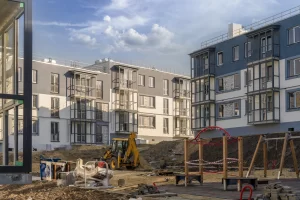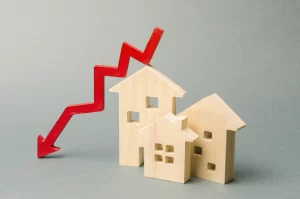One of the biggest hurdles for homebuyers, especially first-time buyers, is saving for a down payment. In Ontario, as in the rest of Canada, the down payment plays a crucial role in determining how much you can borrow, your mortgage options, and even the type of insurance you’ll need. But how much do you really need to put down? This article will break down the key factors influencing your down payment and help you understand what’s required to secure your dream home.
What Is a Down Payment?
A down payment is the portion of the home’s purchase price that you pay upfront when buying a property. The remainder of the purchase price is financed through a mortgage. In Canada, the minimum down payment required depends on the price of the home, and understanding these rules can help you better plan your finances.
Minimum Down Payment Requirements in Ontario
The Canadian government sets minimum down payment requirements based on the home’s purchase price. Here’s how it breaks down:
- Homes Priced at $500,000 or Less: The minimum down payment is 5% of the purchase price. For example, if you’re buying a home for $400,000, your minimum down payment would be $20,000.
- Homes Priced Between $500,000 and $1,500,000: You’ll need 5% for the first $500,000 of the purchase price and 10% for the portion of the price above $500,000. For example, if you’re purchasing a home for $750,000, your down payment would be $25,000 for the first $500,000 and $25,000 for the remaining $250,000, bringing your total minimum down payment to $50,000.
- Homes Priced at $1.5 Million or More: For homes in this price range, the minimum down payment is 20% of the purchase price. If you’re buying a home for $1.6 million, you would need at least $320,000 as a down payment.
These minimum down payments are non-negotiable, meaning you cannot buy a home without meeting the minimum requirement set by the government.
What You Need to Know About Mortgage Default Insurance
If your down payment is less than 20% of the home’s purchase price, you are required to obtain mortgage default insurance (often referred to as CMHC insurance). This insurance protects the lender in case you default on your mortgage. While it doesn’t directly benefit you, it allows you to purchase a home with a lower down payment.
Here’s a breakdown of how mortgage default insurance works:
Premiums:
The premium is calculated as a percentage of your loan amount, and it varies depending on the size of your down payment. The smaller your down payment, the higher the premium. For example, if your down payment is between 5% and 9.99%, the premium is 4% of your mortgage amount. If your down payment is between 10% and 14.99%, the premium drops to 3.10%. If your down payment is between 15% and 19.99%, the premium drops to 2.80%
Adding to Your Mortgage:
The insurance premium is usually added to your mortgage, so you don’t have to pay it upfront. However, this will increase your monthly mortgage payments.
Avoiding Mortgage Default Insurance:
To avoid this insurance, you’ll need a down payment of at least 20%. This will save you on the insurance premiums and reduce your overall mortgage costs.
Factors Influencing Your Down Payment
While the minimum down payment is a starting point, you may want to consider putting down more if possible. Here are some factors to consider when deciding how much to put down:
- Affordability and Budget: How much can you realistically afford to save for a down payment without stretching your finances too thin? It’s essential to strike a balance between saving for a down payment and maintaining a comfortable lifestyle. Overextending yourself could lead to financial strain down the road.
- Monthly Mortgage Payments: The more you put down, the smaller your mortgage will be, which translates to lower monthly payments. A larger down payment can also help you secure a better interest rate, as lenders see it as less risk.
- Mortgage Insurance: As mentioned earlier, putting down at least 20% allows you to avoid mortgage default insurance. If you’re close to that threshold, it might be worth making the extra effort to save a larger down payment to eliminate this added cost.
- Market Conditions: In a competitive real estate market, a larger down payment can make your offer more attractive to sellers, especially in bidding wars. It demonstrates that you’re a serious buyer and reduces the likelihood of financing falling through.
- Long-Term Financial Goals: Consider your long-term goals when deciding how much to put down. Are you planning to stay in the home for many years, or is this a stepping stone to another property? A larger down payment may help you build equity faster, but if you’re planning to move within a few years, it might not be as beneficial.
Saving for a Down Payment: Tips and Strategies
For many homebuyers, saving for a down payment is one of the most challenging aspects of the homebuying process. Here are a few tips to help you build your down payment fund:
1. Set a Goal
Start by determining how much you need for your down payment and set a savings goal. Break it down into smaller, manageable milestones to track your progress.
2. Create a Budget
Review your monthly income and expenses to identify areas where you can cut back and redirect funds toward your down payment. Consider automating your savings to make consistent progress.
3. Take Advantage of Government Programs
In Ontario, first-time homebuyers can benefit from several programs to help with down payments, such as the Home Buyers’ Plan (HBP), which allows you to withdraw up to $35,000 from your RRSP to put toward a down payment
4. Increase Your Income
Look for opportunities to boost your income, whether through a side hustle, freelance work, or asking for a raise at your current job. Any extra income can go directly into your down payment fund.
5. Avoid Taking on New Debt
While saving for your down payment, try to avoid taking on new debts, such as car loans or credit card balances, as this can impact your ability to qualify for a mortgage.
6. Stay Focused
Saving for a down payment can take time, so it’s essential to stay focused on your goal. Keep your eye on the prize and celebrate small wins along the way to stay motivated.
Conclusion
Understanding how much you really need for a down payment is a crucial part of the homebuying journey in Ontario. While the minimum down payment requirements provide a baseline, there are several factors to consider when deciding how much to put down. Balancing affordability, monthly payments, and long-term financial goals can help you make the right decision for your situation.
With the right planning, saving, and strategies, you’ll be well on your way to securing a down payment and stepping into your new home with confidence.






